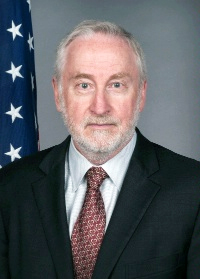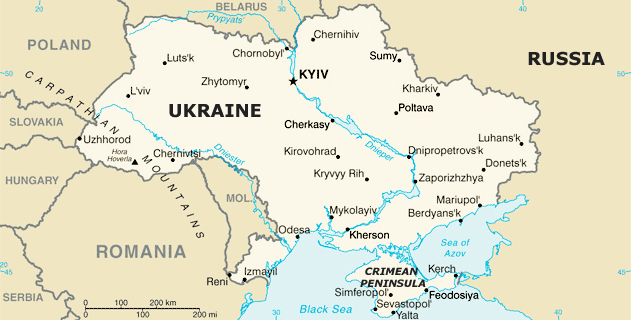DIPNOTE: Ukraine: Choosing Diplomacy Over Aggression – U.S. State Department

US Department of State
Dipnote
April 13, 2014
Ukraine: Choosing Diplomacy Over Aggression
By Douglas Frantz
Douglas Frantz serves as Assistant Secretary of State for Public Affairs.
This was no peaceful spring weekend for Ukraine. Coordinated, well-armed Russian-backed militants attacked government buildings in a professional operation in six cities in eastern regions. Many of the attackers were carrying Russian-origin weapons and outfitted in bulletproof vests and camouflage uniforms with insignia removed.
Observers on the ground saw that the events were carefully planned and orchestrated. In Kharkiv, as pro-Russian groups neared pro-Ukrainian protesters, women, children, and medics moved away, leaving only well-armed young men to approach the pro-Ukrainian protestors. These people were looking for a fight. The pro-Russian “demonstration” was in fact a bloody attack on peaceful, pro-unity demonstrators.
The attacks occurred simultaneously in multiple locations. These were not grass-roots political protests. These armed “demonstrators” took over government administration buildings and security headquarters, seized weapons, forced local officials to abandon their offices, and attacked communications towers.
There are reports that independent Ukrainian and Russian media have been harassed and excluded from covering the seizures, while pro-Russian media had special access to broadcast the demands of these armed groups. Observers have also reported that the militants have taken journalists into custody, attacked at least one, and in one case fired weapons as a warning to other journalists.
Ukrainian officials have reported that Russian intelligence officers are directly involved in orchestrating the activities of these attackers.
Ukraine has seen this before. The parallels to Crimea are worrying. There, highly organized, well-equipped, and professional forces wearing Russian military uniforms, balaclavas, and military gear without identifying insignia moved in first to take control of Crimean government and security facilities before being later replaced by regular Russian military forces.
Under extreme pressure from their large and well-armed neighbor, the legitimate government of Ukraine is nevertheless using diplomacy first. Kyiv has only used force when public safety was at risk and dialogue failed. Prime Minister Yatsenyuk was in the region on Friday to discuss the central government’s willingness to work with regions on decentralization in advance of the May 25 presidential elections. The government is clearly seeking a future as a nation fully integrated in international institutions, a nation that uses words and not force, a nation that defends the rights of minorities, a nation at peace with the West — and the East.
The transitional government of Ukraine has shown admirable restraint to date as it deals soberly with its bullying neighbor to the north. As Secretary Kerry said, “The United States and our allies will not hesitate to use 21st-century tools to hold Russia accountable for 19th-century behavior.” Russia has a choice — it is time to make the right decision.

